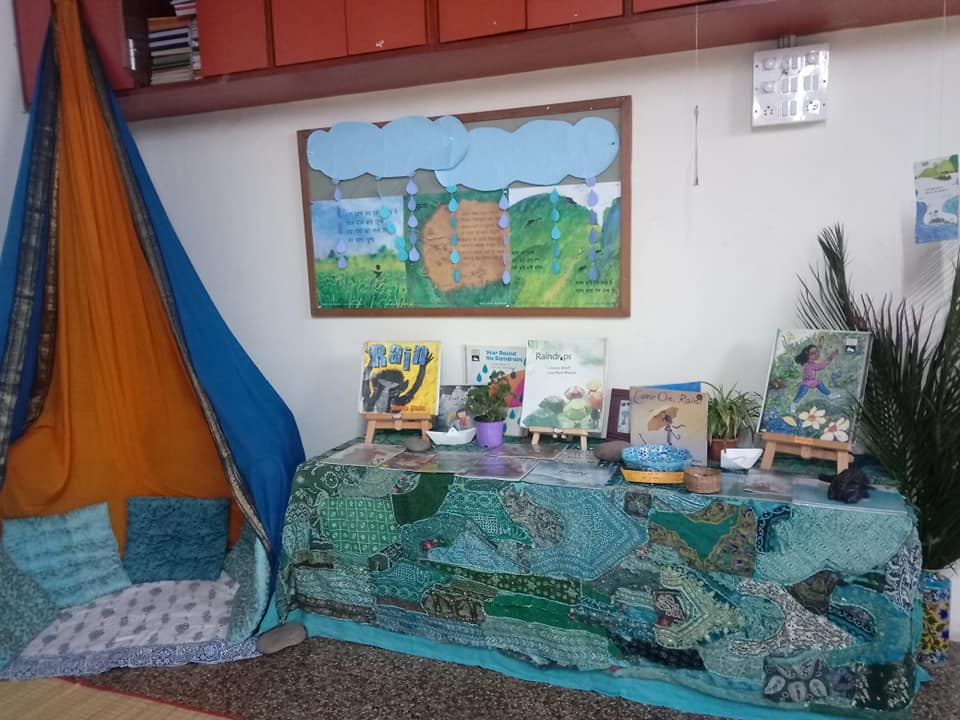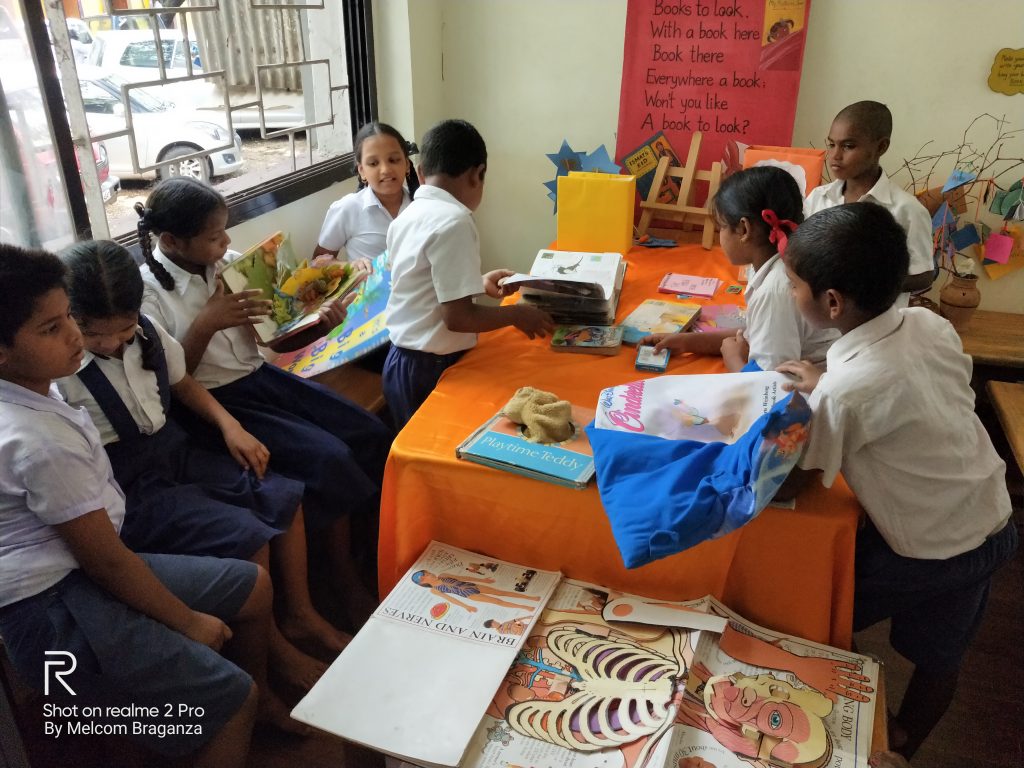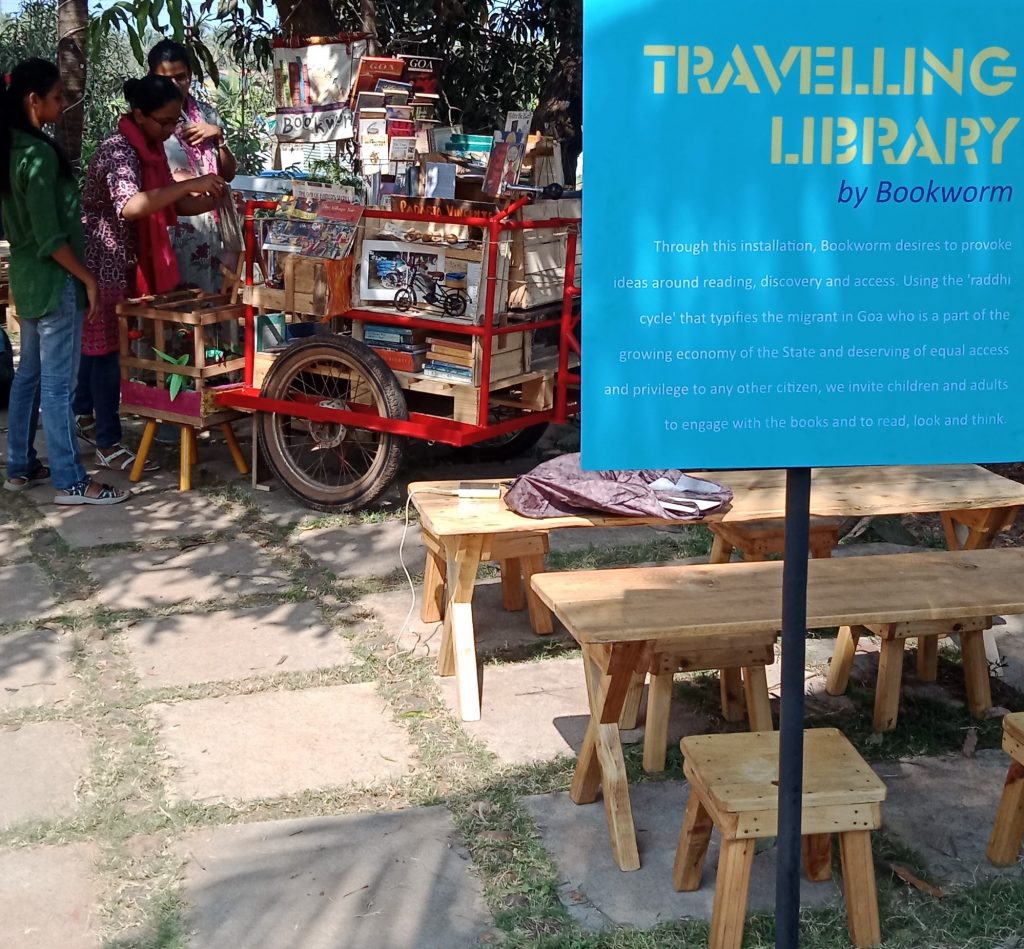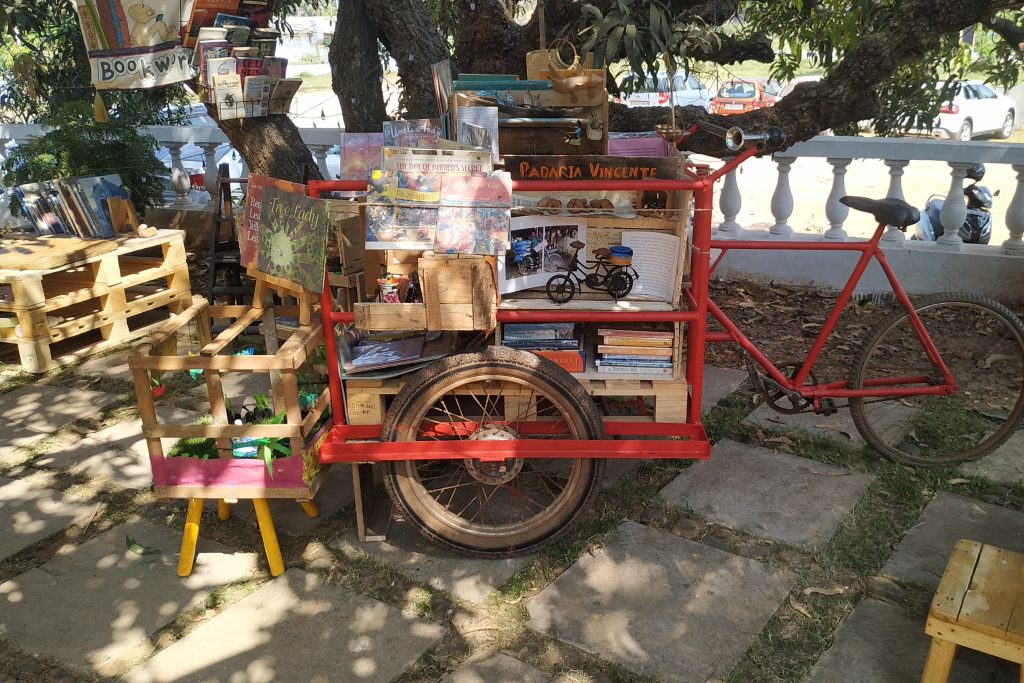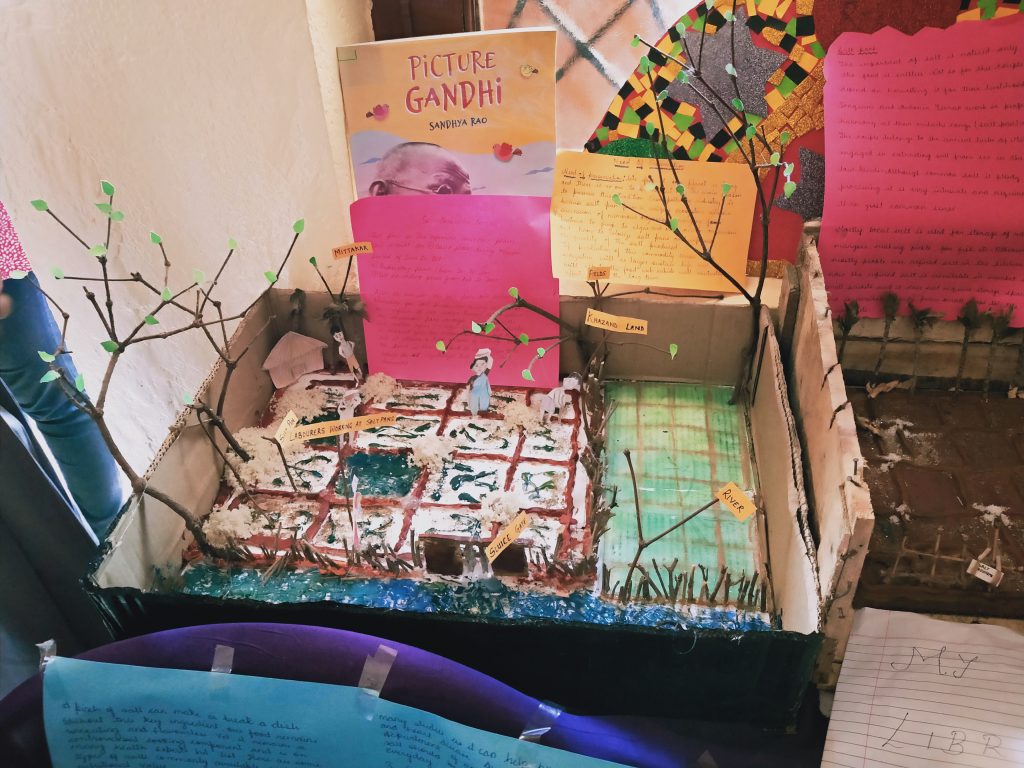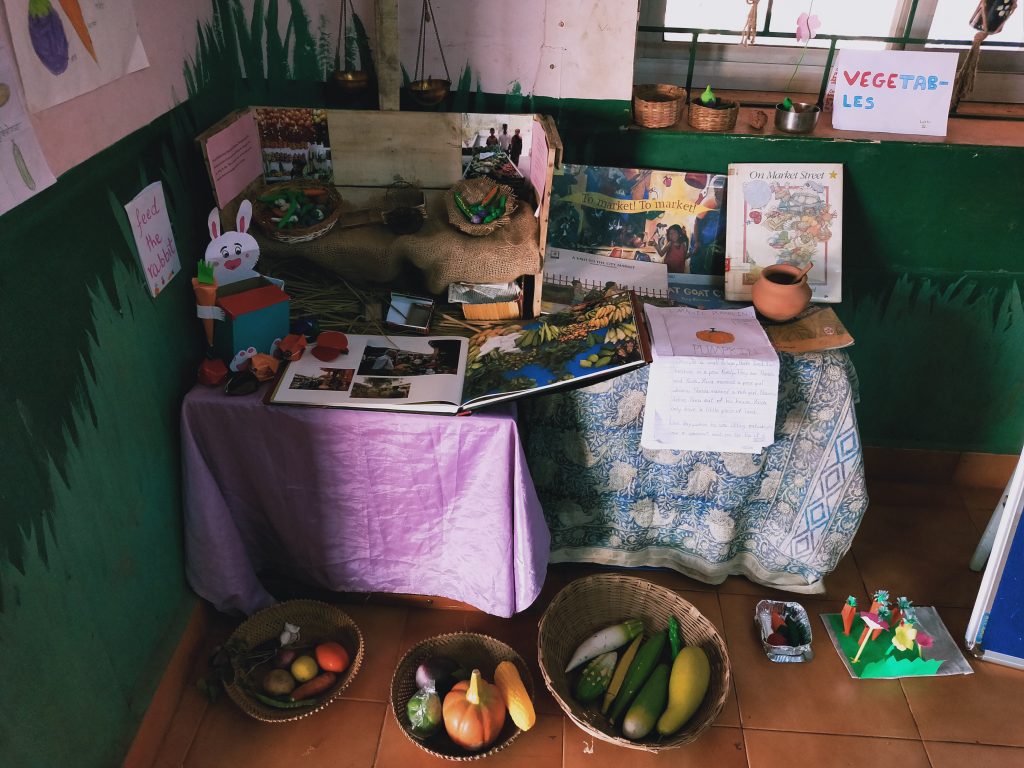A library is amongst many things a place for finding books to browse and read. Reading fills our minds with curiosity, transporting an individual to another world. On its shelves, the library holds precious books that could be overlooked at times. In order to open up the collection to our readers at Bookworm, we often set up displays guided by a theme. A display consists of a collection of books, artwork, interactive activities, artifacts and such to engage the audience with the books through exploration. We aim to embed a surprise element within the display to make it an even more interesting activity for the users to engage with. It motivates and encourages creative audience interaction, making it a positive experience. The multi dimensional aspects not only engage the reader but also allow non-readers to comfortably take part in it. Displays are set up for various other reasons as well, such as, to attract readers towards the act of reading, to break the monotony at a library with an exciting showcase, to encourage learning, to celebrate reading , to draw attention to a time period/ theme / current event .
As part of the Libraries in School program, Bookworm has been setting up displays at the schools it caters to, every year. Displays in schools began in a rather limited way. The idea around displays was new to the team as well and thus the output was a gathering and laying out of resources. Since then, understanding, experience, reading and experience with displays has widened. This has led to some exciting developments in how displays now come to be.
Themes are now arrived at after much discussion at great length to reach a consensus. The team has since harnessed the idea of an open-to-all display to encourage interactive learning to stimulate an interest in reading. The effort was in motivating the entire school to participate. As the children would connect to the display personally, their growth through it would be unavoidable. To any theme the children would take an interest in, learning would be an expected benefit. In order to make additions to the display, they would end up reading about and gaining new knowledge on the theme. Adding poems, stories and drawings would help form a relationship with the display which in turn would augment memory through this engagement. The planning and execution of displays took time and effort, considering the response expected. And in doing so, the team was not shy of disappointments.
Not every school that the LIS program functioned at, had individual dedicated library rooms, and displays weren’t always given a special space either. In such situations, some displays were active only on the day the Bookworm team set them up and were limited to being accessed by the library children only during the session, following which, due to a fear of vandalism, the school authorities would put all display material under lock and key. At these schools, there was no room for interaction. Previously, the displays introduced at various schools were met with a mediocre response. The teachers hardly engaged and hence, getting the entire school to participate was impossible. Only the library children would show any interest and engagement motivated by the Bookworm team. The potential of an open-to-all display, involving the whole school wasn’t being met.
But this year 2020, all of that changed. The Bookworm team invested time in conducting research on the themes of displays for the purpose of the Goa Open Arts Festival which resulted in a huge collaborative Traveling Library that featured work that included travel in daily life and honored work on the margins. So activities like a baker (poder) box, a fisherman box, a vegetable vendor box, etc. were crafted. Once the exhibition ended, the team decided to pick one of the crafted boxes as a guide for the school display. A wide range of books were selected according to the themes chosen. Interactions with teachers began in earnest and recurring reminders on displays to children in the school helped prepare the road for what was to follow.
In Our Lady of Merces School, the box chosen was a Goan Poder’s life and story. The distrust factor continued from the previous years, but the Bookworm team intervened, insisting that the teachers let the Display be public with an opportunity for the whole school to interact. In doing this, the team managed to garner a good response from the children. The primary children made different types of breads out of clay and the high school children involved themselves with making a poster of the timings the poder visits homes on his daily rounds. The books and stories connected with bread making and bakers was read and browsed. Yet another School that usually distanced itself from the library displays was Immaculate Heart of Mary School. For this school, the Salt Pan box was chosen. Relationship with the teachers in this school has been enriched through a Training and Mentoring program (TMP) and this further helped in acquiring active participation and cooperation from the teachers in the school. In addition, a dedicated library space at this school helped with engagement and interaction as the Display was open throughout the week for everyone to see and add to. The librarian also thought to involve some high school children who had gone on a field trip to the Salt Pans. This made the Display a collective activity wherein the children added paintings, articles, poems, stories and information of interest. This went on to be presented at the school assembly as a collaborative project between the library classes and the high school children. A school where the response has constantly been positive is Swami Vivekananda School. This year as well, two of the teachers who were part of the TMP program, showed good leadership with the Display by sharing with the Bookworm team about a session in which the children had interacted with a vegetable vendor who had visited the school. This connection with the theme, helped in cumulating information and photos of their experience, adding craft vegetables from the craft period, and making this an exciting collaboration with other school subjects.
This year brought out a new positivity among the team with active participation received from all the Schools. The children and the teacher relationship made sure of a better engagement with the displays in addition to the open library set-up with a space dedicated for the same. The open display ensured the children developed a connection hence stimulating a better response. And the element of trust by the school teachers guaranteed it’s growth. The themes and the creative installation by the Bookworm team made sure the children developed a visually creative response towards it. The teaming of high school children along with our primary school library children took the Display to a wider group. Presentations at the assembly made sure the whole school acknowledged the library and the Display. The activity of setting up displays met its potential this year due to an active engagement by the teachers and strengthening of the relationship between Bookworm and the schools. A lot of factors aided displays this year and we hope that such an engagement and interaction will continue for years to come.

